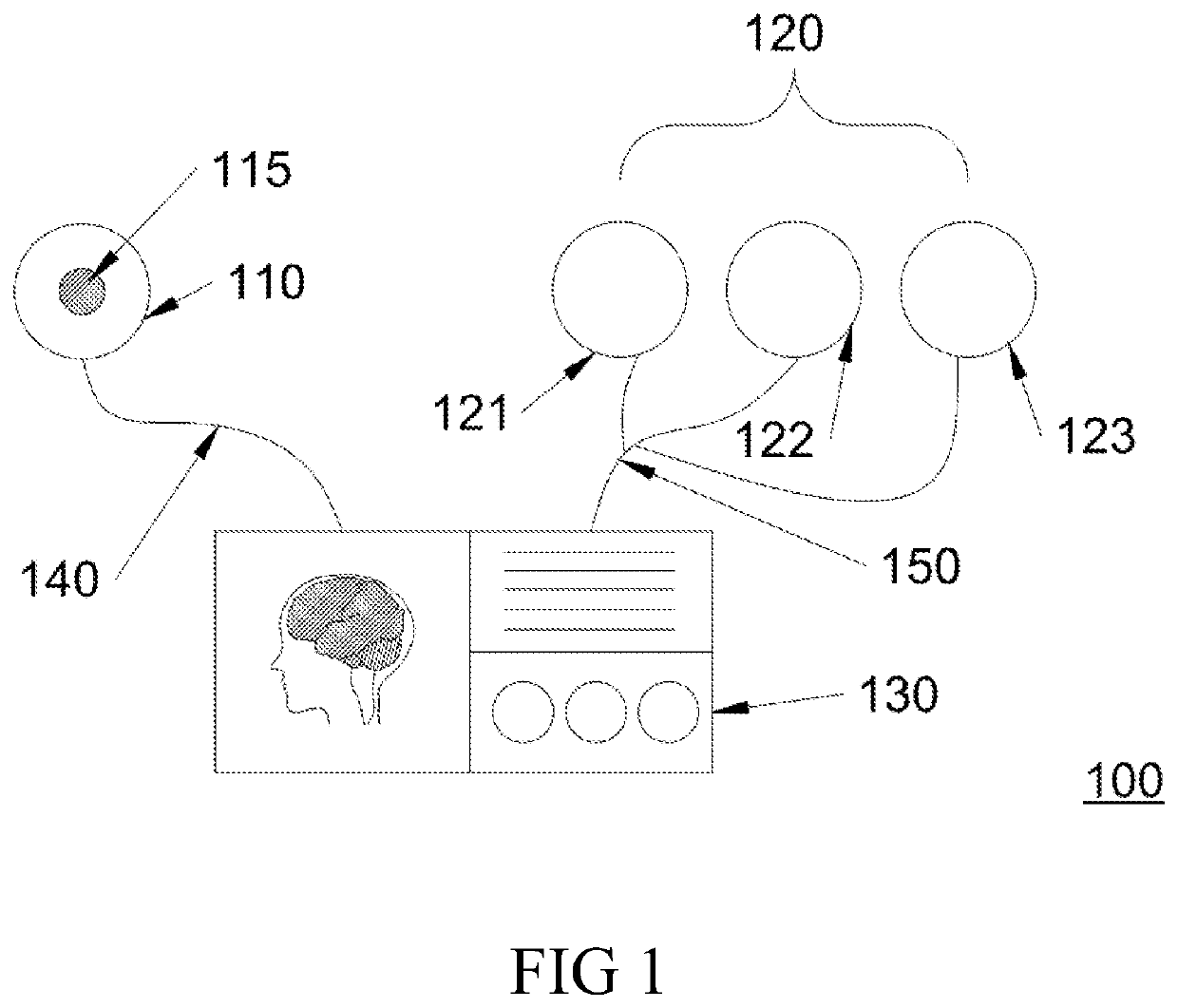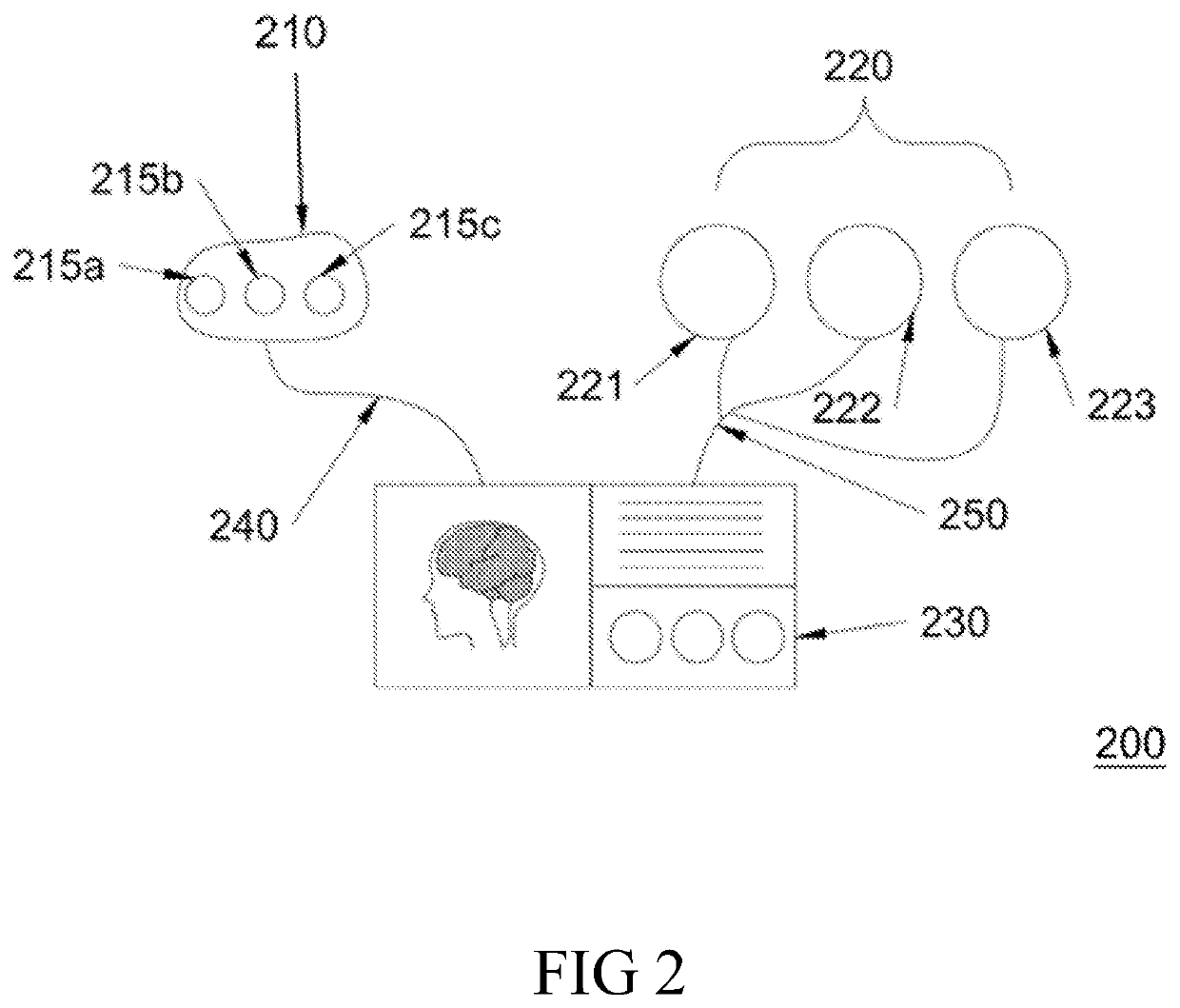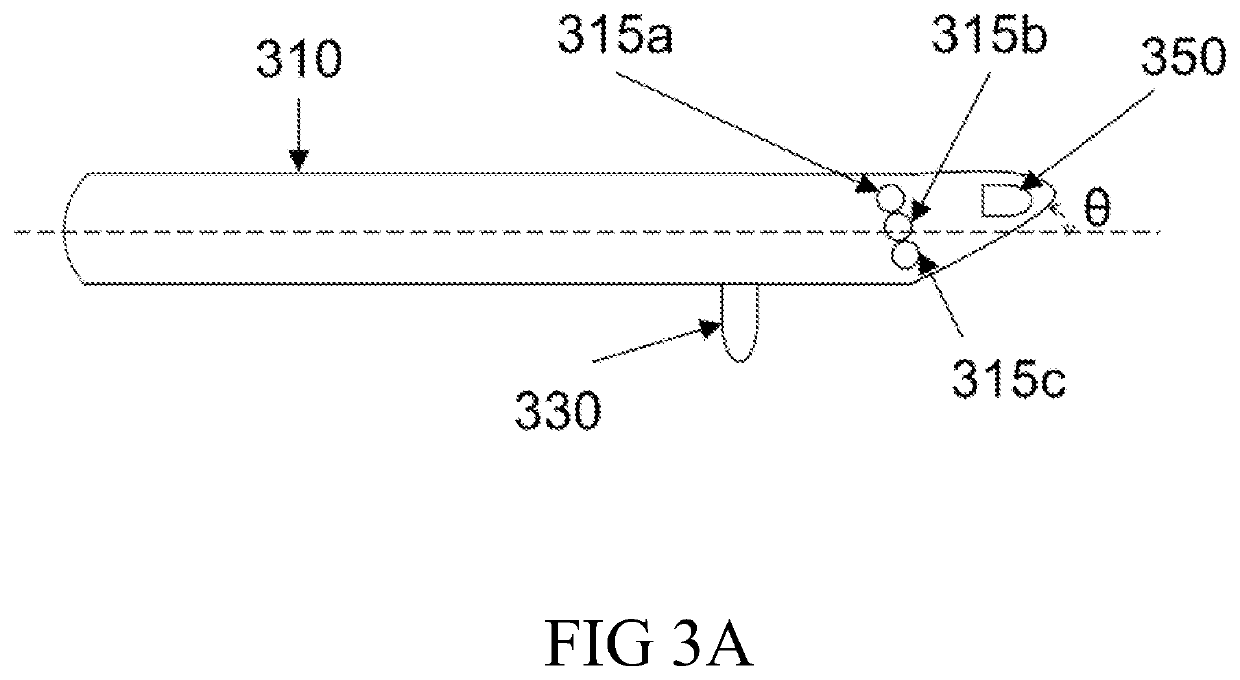Device and method for measuring blood oxygen level and/or detecting brain hematoma
a blood oxygen level and brain hematoma technology, applied in the field of brain oxygen level determination and brain hematoma detection, can solve the problems of increasing mortality, worsening the outcome of survivors, and each of these techniques has its own limitation, so as to improve the accuracy and efficiency of measurement
- Summary
- Abstract
- Description
- Claims
- Application Information
AI Technical Summary
Benefits of technology
Problems solved by technology
Method used
Image
Examples
examples
[0074]1.1 Simulation of BH by Use of Embedded Ink Stick
[0075]In the examples, an ink stick (1 cm3: 0.65 cm×0.9 cm×1.7 cm; 2.5 cm3: 1.63 cm×0.9 cm×1.7 cm; or 5 cm3: 3.25 cm×0.9 cm×1.7 cm) embedded in a plastic article made of titanium oxide and polyester resin (the distance between the ink stick and the surface of plastic article was 0.5 cm, 1.7 cm, or 2.5 cm) was used to imitate different situations of brain hematoma (BH, with different mass lesions and locations). The probe was set to emit NIR respectively at 808 nm, 780 nm, and 850 nm. During operation, the probe and the detecting means were respectively disposed on either the same sides (as traditional detecting method, in which the light source and detector were configured closely and operated in proximity to each other), or on the opposite sides of the plastic article (i.e., the simulated BH). Results obtained from the same and opposite sides are respectively provided in FIGS. 9 and 10.
[0076]When the probe was disposed in close...
PUM
 Login to View More
Login to View More Abstract
Description
Claims
Application Information
 Login to View More
Login to View More - R&D
- Intellectual Property
- Life Sciences
- Materials
- Tech Scout
- Unparalleled Data Quality
- Higher Quality Content
- 60% Fewer Hallucinations
Browse by: Latest US Patents, China's latest patents, Technical Efficacy Thesaurus, Application Domain, Technology Topic, Popular Technical Reports.
© 2025 PatSnap. All rights reserved.Legal|Privacy policy|Modern Slavery Act Transparency Statement|Sitemap|About US| Contact US: help@patsnap.com



